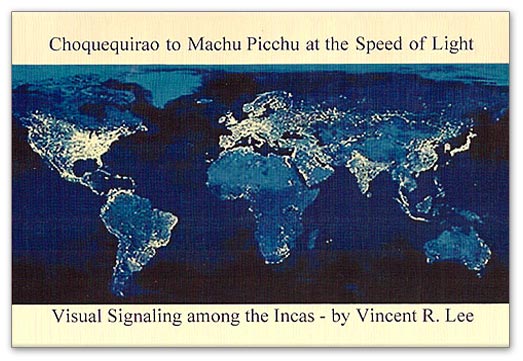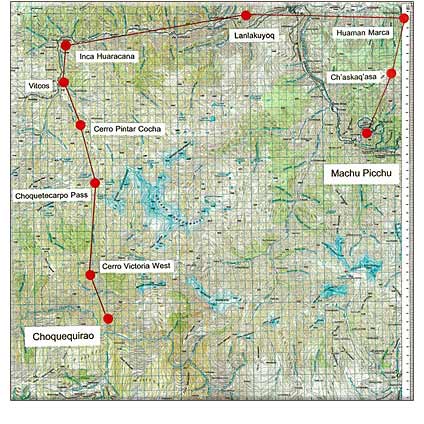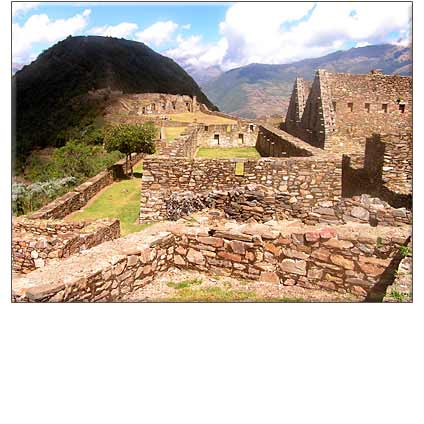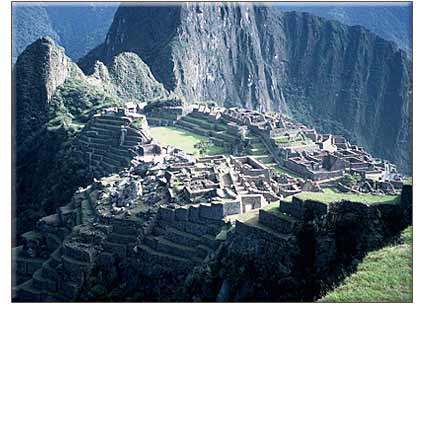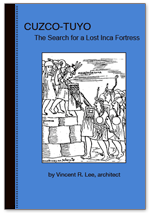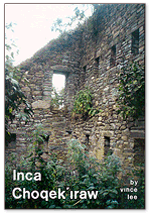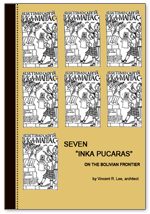CHOQUEQUIRAO TO MACHU PICCHU AT THE SPEED OF LIGHT: Visual Signaling Among the Incas
A newly discovered network of inter-visible signaling stations suggests a line-of-sight system of communication using smoke and fire throughout the Inca Empire in the Andes of South America
Take a look inside this publication
Excerpt
Documentary Evidence:
Reference to the Inca chasqui message runner system is found in various sources, but only Garcilaso de la Vega goes on to describe an apparently collateral system utilizing visual signaling. His description of each, and their apparent inter-relationship is here excerpted from Chapter VII of Book Six of the First Part of his Royal Commentaries:
Chasqui llamaban a los correos que había puestos por los caminos para llevar con brevedad los mandates del rey y traer las nuevas y avisos que por sus reinos y provincias, lejo o cerca, hubiese de importancia. Para lo qual tenian a cada cuarto de legua cuatro o seis indios mozoz y ligeros, los cuales estaban en dos chozas para repararse de las inclemencias del cielo. … poní siempre las chozas en alto y también las poní de manera que se viesen unas o otras. Estaaban a un cuarto de legua, proque decían que aquello era lo ue un indio podia corer con ligereza y aliento sin cansarse (1991:342[1609]).
And later:
Tenían otra manera de dar aviso por estos correos y era haciendo ahumadas de dia de uno en otro y llamaradas de noche, para lo cual tenían siempre los chasquis apercibido el fuego y los hachos y velaban perpetuamente de noche y de dia, por su rueda, para estar apercibidos para cualquier suceso que se ofreciese. Esta manera de aviso por los fuegos era solamente cuando habia algún levantamiento y rebellió de reino o provincia grande y hasíase para que el Inca lo supiese dentro de dos o tres horas cuando mucho (aunque fuese de 500 o 600 leguas de la corte) y mandase apercibir lo necesario para cuando llegase la nueva cierta de cuál provincia o reío era levantamiento (1991:343[1609]).
Or, as translated from the Spanish:
Chasqui was the name given to the runners placed along the roads for the purpose of carrying the king’s orders rapidly and bringing news and reports of importance from his domains and provinces, far and near. For this purpose, they had four or six young and athletic Indians stationed at each quarter of a league (about 1.3 kilometers) in two huts built to shelter them from inclement weather. … the huts were always built at high points, and in such positions that each was within sight of the next … The distance was … how far an Indian could run at speed and in breath, and without being tired (1966:328[1609]).
And later:
They also had another way of sending messages, by passing on smoke signals by day or flames at night. For this purpose the chasquis always kept fire and faggots (of firewood) prepared, and kept permanent watch by night and day in turns, so that they were always ready for any contingency. This method of sending messages by fires was reserved for any rising or revolt in any great province or kingdom, so that the Inca would know about it within two or three hours at most, even though it would be five or six hundred leagues (2500-3000 kilometers) away from the capital, and could take necessary steps even before he received tidings (via runners) about the exact province where the rising had occurred (1966:329 [1609]).
Apparent confirmation of the actual use of emergency visual signaling is found in an enigmatic passage in the 1615 Relació of Santa Cruz Pachacuti, describing a battle between Huascar Inca and the forces of Atahualpa:
Y assi al dia siguiente, el dicho Guas(car) Ynga despacha mensajeros para que en todo su campo los pregonasen para dar chayas de todas partes con la furí e ympetu possible, danda señales de humaradas, tocando gualla quipas (1993: 262[1615]).
Or, as translated from the Spanish by the author (emphasis added):
And therefore the following day, the said Huascar Inca dispatched messengers so that in all his camp it was proclaimed to arrive from everywhere with all possible fury and vigor, sending signals of smoke, playing spondylus horns.
Garcilaso’s reference makes it clear that manning visual signaling stations was a collateral duty of the chasqui runners, thus implying that stations were established on inter-visible high points or at important nodes along the road corridors routinely used by the message carriers. Further, the requirement that stations be manned continuously suggests that they were also located at or close to habitation sites with ready access to food, shelter, water and firewood.

